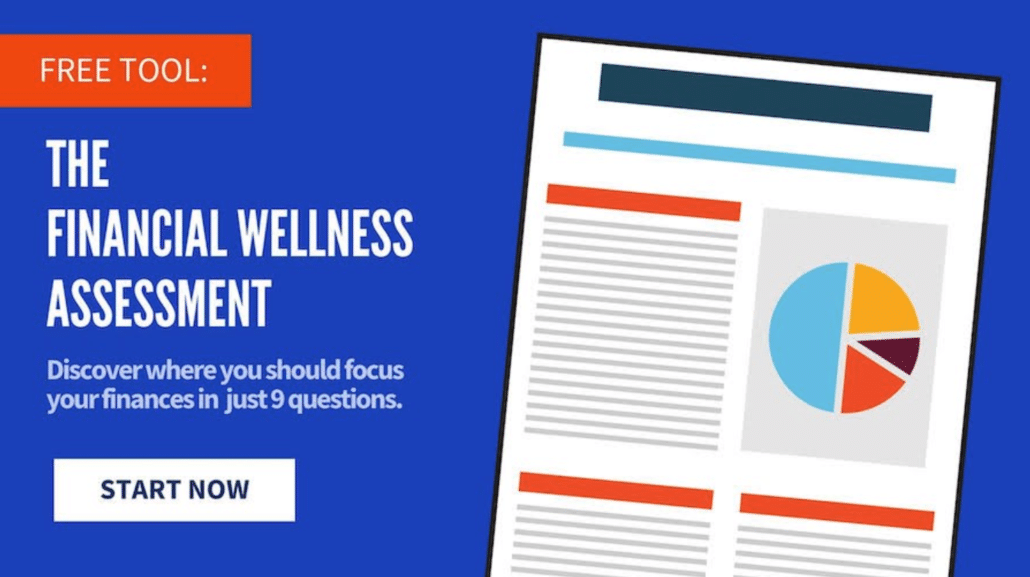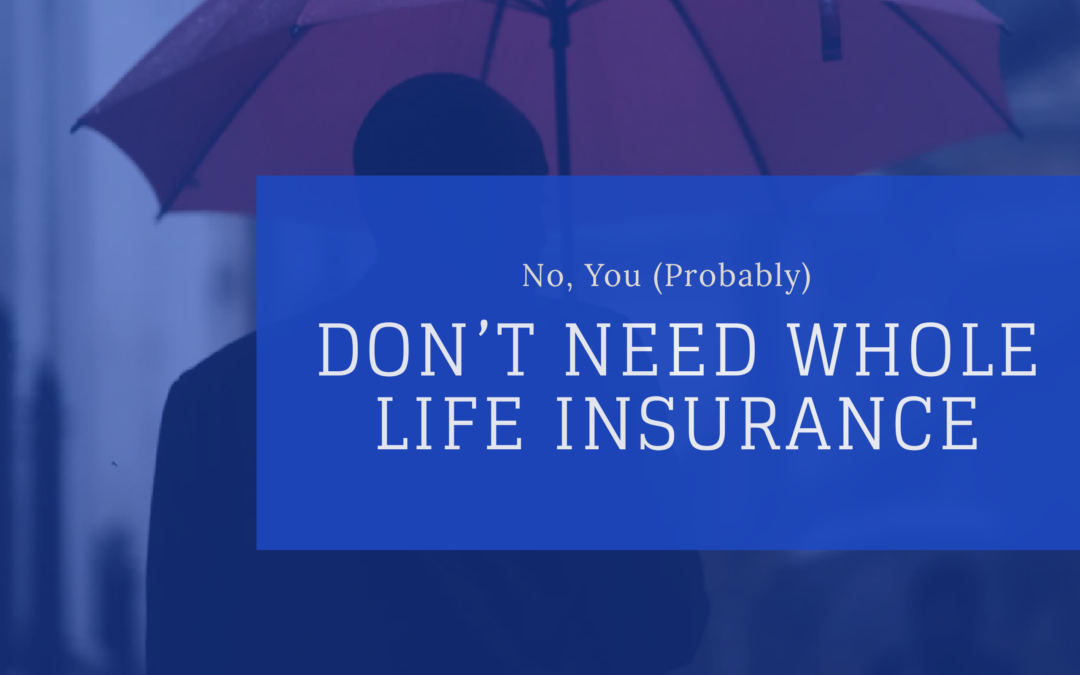Nearly everyone needs life insurance, but it’s easy to end up with a bad policy.
That’s not your fault. It happens because of predatory sales tactics that are often used by people who sell the insurance.
When you find yourself with a permanent life insurance policy, you probably have more insurance than you need as well as something that cost you more than the term insurance that would have offered you sufficient coverage.
Here’s what you need to know when it comes to insurance coverage and why permanent life insurance rarely makes sense for most people.
Term Life Insurance vs. Permanent Life Insurance
There are two basic types of life insurance: term life and permanent life.
Term life insurance provides coverage for a specific period of time, usually between 1 and 30 years. If you live to the end of the term, the policy terminates, and you no longer owe premium payments.
Permanent life insurance is quite a bit more expensive because it provides protection for your entire life as long as you continue paying the premium and the insurer remains solvent. Permanent life insurance comes in three broad flavors: whole life, universal life, and variable life.
- Whole life: life insurance that pays a benefit on the death of the insured and also accumulates a cash value.
- Universal life: is a hybrid life insurance policy with an investment savings option. A portion of the universal life insurance monthly premium goes to the policy premium that provides the death benefit and another portion of the premium is invested.
- Variable life: is a permanent life insurance product with separate accounts comprised of various instruments and investment funds, such as stocks, bonds, equity funds, money market funds, and bond funds.
Beware of the Conflicts of Interest Inherent in Insurance Sales
Unlike fiduciary financial advisors, people who sell insurance don’t have to uphold the fiduciary standard. That means they are under no obligation to work in your best interest.
Instead, they can work in their best interest, or the best interest of the company.
That’s why it’s sales, not advice or planning, that you get when you talk to an insurance agent who is recommending you a permanent life insurance policy.
I, myself, went through sales training during an insurance internship that incorporated a series of one-liners I still hear today that are highly misleading. Such sales techniques may lead you to think permanent life insurance is a good idea, but it rarely makes sense for most people.
Common Arguments for Permanent Insurance and Why They Don’t Make Financial Sense
Here are some of the most common of these one-liners that you might expect to hear as an insurance salesperson pushes a form of permanent insurance instead of a lower cost term policy.
“Buy life insurance while you are young and healthy because rates are low.”
As a young adult, your death would not create a financial hardship for others, unless you’re married or have children. If you’re young and single, you don’t need life insurance at all.
Premiums are lower for young people who are healthy, which makes sense because your probability of dying is low. That doesn’t mean you need insurance now. Paying insurance premiums when nobody is dependent on your income is a big mistake, especially if you could be putting that money toward other goals like retirement or buying a home.
The difference in earnings you could realize by investing the money instead of paying permanent insurance premiums is enormous.
“Why rent a policy when you could own it?”
Insurance agents sometimes compare buying permanent life insurance to building equity in a home, but this doesn’t make any sense. The choice to rent or buy a home is completely different because you always need a place to live. Whereas, your need for life insurance disappears at the end of a term policy when you no longer have dependents relying on your income should you succumb prematurely.
More importantly, the cost of renting versus owning an insurance policy is drastically higher than the long-term difference in renting versus owning a home. Building equity in a home isn’t the best way to accumulate wealth in the first place and building wealth inside a permanent insurance policy is worse.
Investing the cost savings from buying a term policy versus a permanent policy is a far superior method for accumulating wealth. In addition, you can access your investments or savings without the restrictions that come with taking a loan on a permanent insurance policy. That brings me to the next one-liner.
“With the growing cash balance, you can be your own bank and take loans from the policy.”
As a policy’s cash value grows, which, by the way, takes a very long time, you are allowed to take loans against a certain percentage of the cash value. However, to maintain the death benefit and recover the lost effect of compounding on the funds being withdrawn, the policy charges a high-interest rate on the amount withdrawn. Plus, you must keep paying premiums.
If you fail to make premium or interest payments, the death benefit decreases and the policy eventually terminates. At that point, you’ll owe ordinary income taxes on the loan amount and on the remaining cash value minus the amount of premiums paid during the life of the policy.
A permanent policy is not the personal piggy bank that an insurance salesperson might lead you to believe. It is a highly illiquid and costly way to accumulate savings.
“Permanent insurance is a form of forced savings.”
This is a terrible reason to buy insurance. Remember, you buy insurance to protect your family against the loss of income and the value of your household contributions.
The cash value built up inside a permanent insurance policy lacks the flexibility and liquidity necessary to live life on your terms. The best form of forced savings is setting up an automated plan to fund your goals.
“Look at those dividends in the policy. You can’t earn those in your portfolio. Plus, that growth is tax-free!”
By law, an insurance salesperson can’t refer to a whole life insurance policy as an “investment vehicle.” Still, they lean heavily on the idea of “dividend growth” when presenting a policy illustration.
Dividends for a permanent whole life insurance policy are a combination of the investment gains the insurer earns on your capital, plus the difference between how much the company collected in premiums (versus how much they paid out in death benefits).
Dividends are an estimate, but they are rarely emphasized as such. Policy illustrations often restate projected dividends and future cash value, so the projected growth of your cash value is far from guaranteed.
“You already have some of your savings going to retirement accounts. Think of your policy as a form of diversification.”
You hear this argument when agents pitch you almost any form of permanent insurance. With a variable or universal life policy, you might also hear something along the lines of, “You can capture market upside, but protect against the downside.” This is because part of your premium payments go to the purchase of insurance and the rest goes to a super expensive stock investment.
The most cost-effective and flexible approach is buying term insurance to financially protect your loved ones and investing your savings in a low-cost portfolio for long-term growth.
Finding the Right Policy For You
When choosing between term and permanent life insurance, most people are served best by choosing term insurance and investing their cost savings into a low-cost portfolio if the goal is long-term growth. It’s far more cost-effective and flexible.
Life insurance has its place in your financial life. However, insurance is best as insurance and investments are best as investments. When you have financial products trying to perform double-duty, it muddies the waters and ineffectively covers the distinct separate purposes of both types of financial vehicles.
Permanent policies are quite a bit more expensive, so there are only a few instances to consider this type of policy such as when you have children with special needs, a taxable estate, or unique asset protection needs. Even then, there are other solutions to help manage these financial considerations better than a permanent life insurance policy.
In most cases, term life insurance is the answer for almost everyone because you can get the coverage you need at a fraction of the cost of permanent insurance.
…
RESOURCE: Do you want to make smart decisions with your money? Discover your biggest opportunities in just 9 questions with my Financial Wellness Assessment.















